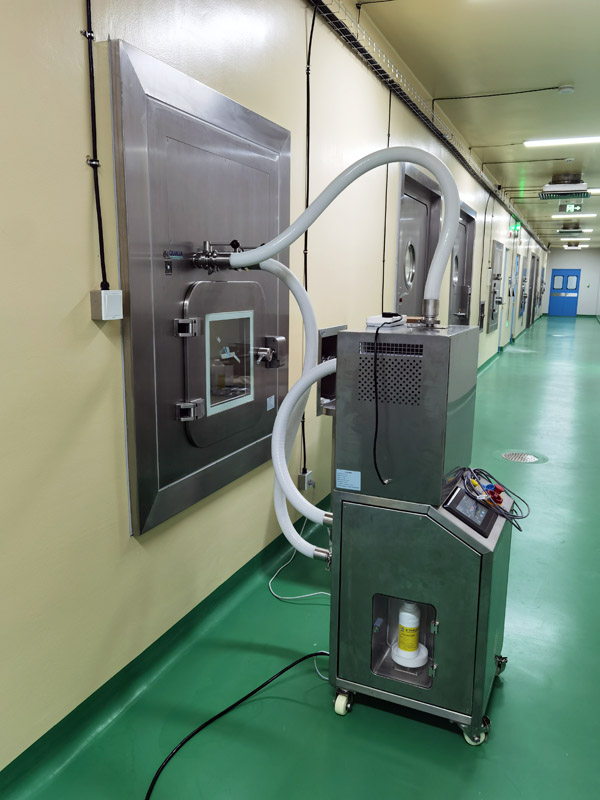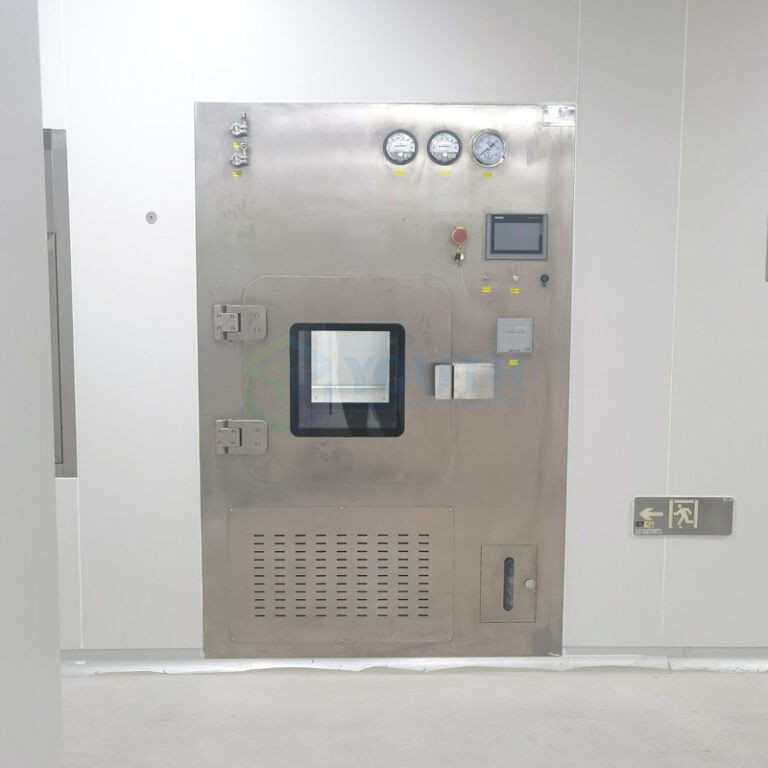VHP Equipment Key Features:
Optimized Hydrogen Peroxide Utilization:
Our VHP equipment employs a precise control mechanism that guarantees a consistent and uniform distribution of hydrogen peroxide vapor, avoiding condensation and maintaining optimal concentration levels throughout the sterilization process.
Advanced Material Compatibility:
The innovative design prioritizes compatibility, reducing the risk of corrosion on sensitive surfaces, including color steel plates, ensuring your equipment and facilities remain in pristine condition.
Customizable Degradation System:
Post-sterilization, our customizable HPSD hydrogen peroxide degradation system activates to efficiently reduce VHP levels, such as degrading to 10ppm, before introducing fresh air via the HVAC system. This approach minimizes the corrosive effects of hydrogen peroxide and adheres to eco-friendly standards.
Intelligent Environmental Adaptation:
Unlike traditional methods that can lead to condensation and require robust corrosion resistance, our VHP sterilization equipment intelligently adapts to varying environmental parameters, providing consistent results without compromising the integrity of HVAC units and pipelines.
YOUTH's VHP Machines
Safe, Controlled, and Reliable:
Safety is paramount in our design philosophy. Every aspect of our VHP Sterilization Equipment is engineered for control and reliability. The equipment meets all necessary safety standards and protocols, ensuring a risk-free operation.
Tailored for Your Needs:
Understanding that every cleanroom has unique requirements, we offer tailored VHP solutions. Discuss your needs with our specialists, and we will configure the ideal system for your application—meeting the demands for audit trails, data integrity, and user management.
Environmental Responsibility:
We believe in providing solutions that are as environmentally responsible as they are effective. Our equipment is designed to leave a minimal environmental footprint, reflecting our commitment to sustainability.
Get in Touch:
Discover the difference in VHP sterilization with equipment that sets new benchmarks for cleanliness and operational excellence. Contact us to learn more about our products, request a demonstration or obtain a quote for a solution that puts your sterilization concerns to rest.
FAQs:
What materials are compatible with VHP?
What is VHP sterilization?
VHP sterilization is a process using vaporized hydrogen peroxide to sterilize an enclosed area or equipment. It’s highly effective at eliminating bacteria, viruses, fungi, and spores. The VHP is introduced as a vapor, enabling it to cover all surfaces thoroughly for complete sterilization.
Can you sterilize equipment with hydrogen peroxide?
What are the limitations of VHP sterilization?
Is VHP safe for electronics?
Which packaging material is not compatible with hydrogen peroxide sterilization?
How long does VHP sterilization take?
Does VHP leave residue?



